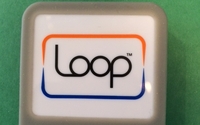 Mobile payments just got a very major boost.
Mobile payments just got a very major boost.
Following
many months of rumors of Samsung coming out with its own version of mobile payments to counter Apple Pay, the company just decided to acquire mobile payments startup LoopPay.
This is a very
interesting mobile payments development on multiple levels.
I came across Loop about a year and a half ago and visited the Loop headquarters just outside of Boston at the time, when the
company had just a few employees.
I went out shopping with Damien Balsan, COO and a member of the founding team, to see an early iteration of their technology when pretty much no one had ever
heard of it, as I wrote about back in December of 2013 (Mobile Payments &
Replicating the Credit Card Experience).
advertisement
advertisement
At the time, the well-funded (Samsung and Visa were investors) company had a FOB to test the concept.
You plug the Loop dongle into a
phone, like Square, swipe a credit, debit or loyalty card to enter them into Loop, and that’s pretty much it. You pick the default card on your phone and the mobile wallet is all set.
The critical factor then and now is that the FOB works at just about every payment location that takes credit cards, without the merchant having to do or install anything.
I’ve used
the Loop payment FOB for more than a year in many places, including in London, Cologne, Paris, Dusseldorf and countless cities throughout the U.S.
A key point is that it works seamlessly by
essentially emulating a credit card swipe, but in a fraction of a second.
The FOB was an early iteration of the technology to see how it would work in the marketplace.
It was an
obvious interim step, since no one at LoopPay had any illusion that carrying a separate piece of hardware for making mobile payments would be end game.
The company later created a smartphone
case that included the technology along with a pocket to hold a license and other identification cards. At CES in Las Vegas last month, there were lines of people waiting to see the Loop technology
and speak with the top execs there.
The logical step for Samsung is to move that technology inside the phone, which seemed like the obvious play a year and a half ago. That phone, the Galaxy
S6, is expected to be introduced early next month, just before the start of the Mobile World Congress.
Somewhat of an irony here is that Apple was the long-time holdout to include NFC (Near
Field Communication) in its phones and finally jumped in with the iPhone 6 for Apple Pay.
Long before that, Samsung and many other Android phone makers included NFC in their phones, which
could be used for mobile payments, which have yet to hit mass acceptance, especially in the U.S.
The NFC irony is that the Loop payment system does not need NFC, which means that, at least
theoretically, it can be used in any future phone to pay at just about any POS terminal.
The larger significance of the deal may be in the area of consumer behavior.
Like Apple Pay,
Samsung Pay (or whatever they ultimately call it) will cause essentially the same consumer action of bringing the phone to a payment terminal.
This phone motion activity will be greatly
expanded and long term can be expected to be in all Apple and Samsung phones, a combined major portion of the global market ownership.
Whether this will cause mobile payments to move to the
masses is yet to be seen.
But now any Apple or Samsung phone owner who wants to pay by phone just needs a phone whose name ends in 6.
And with Samsung’s version, that’s
pretty much all that will be needed.